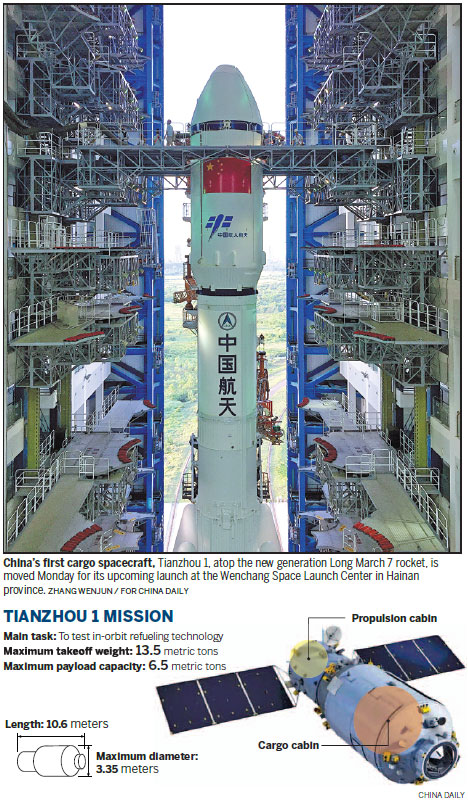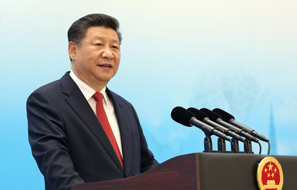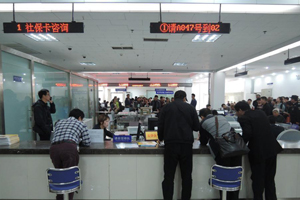Nation's biggest spacecraft moved into place for launch
China's largest and heaviest spacecraft, the Tianzhou 1, which also is its first cargo spaceship, was moved into place atop the new-generation Long March 7 rocket on Monday at the Wenchang Space Launch Center in Hainan province in preparation for its mission.
The launch, scheduled to be carried out between Thursday and Monday, is a crucial development for the nation's upcoming manned space station, scientists said.
It also marks the second flight of the Long March 7, which made its maiden launch in June, according to the China Manned Space Agency.
Starting at 7:30 am, it took about two and a half hours to move the rocket and Tianzhou 1 to the launch site. (Tianzhou means "heavenly vessel" in Chinese.) Engineers will conduct final tests and fuel up the rocket with liquid oxygen and kerosene, the agency said.
Tianzhou 1 was transported by sea to the Wenchang center from Tianjin, where it was built, in mid-February. After its launch, the spacecraft will dock with the Tiangong II ("heavenly palace") space lab, which has been in orbit since September.
The cargo ship was developed by the China Academy of Space Technology and is 10.6 meters long and has a diameter of 3.35 meters. Its maximum takeoff weight is 13.5 metric tons, enabling it to carry up to 6.5 tons of supplies.
It is larger and heavier than Tiangong II, which has a length of 10.4 meters, a diameter of 3.35 meters and a weight of 8.6 tons, according to the academy.
The main goals of the Tianzhou 1 mission are to supply fuel to Tiangong II and test in-orbit refueling technologies, the manned space agency said. In addition, the cargo ship will ferry more than 10 pieces of scientific equipment.
In the future, the Tianzhou series will be tasked with transporting supplies of fuel and other necessities to China's manned space station, which will start construction next year and is expected to enter service by about 2022.
The station will consist of three parts - a core module attached to two space labs, each weighing about 20 tons - and will operate for at least 10 years, the agency said.
A cargo transportation system is key to operating a space station because without it, the station would run out of power and basic necessities and will fall back to the Earth much earlier than the designed time, Chinese scientists involved in the project said.
Pang Zhihao, a researcher of human space activity at the China Academy of Space Technology, said a cargo spacecraft acts like a courier, helping keep the space station in the heavens for a decade or longer, so the courier's debut is important.
"The mission will verify whether the cargo spacecraft was well designed and produced and whether it can work well with other spacecraft," he said. "The most difficult part of this mission will be the refueling process as it will be very sophisticated and will involve some risk."
The world's first cargo spacecraft, Progress 7K-TG, was developed and launched by the former Soviet Union in 1978. Currently, four types are in service, including the United States' SpaceX Dragon and the Japanese H-II Transfer Vehicle. zhaolei@chinadaily.com.cn


























